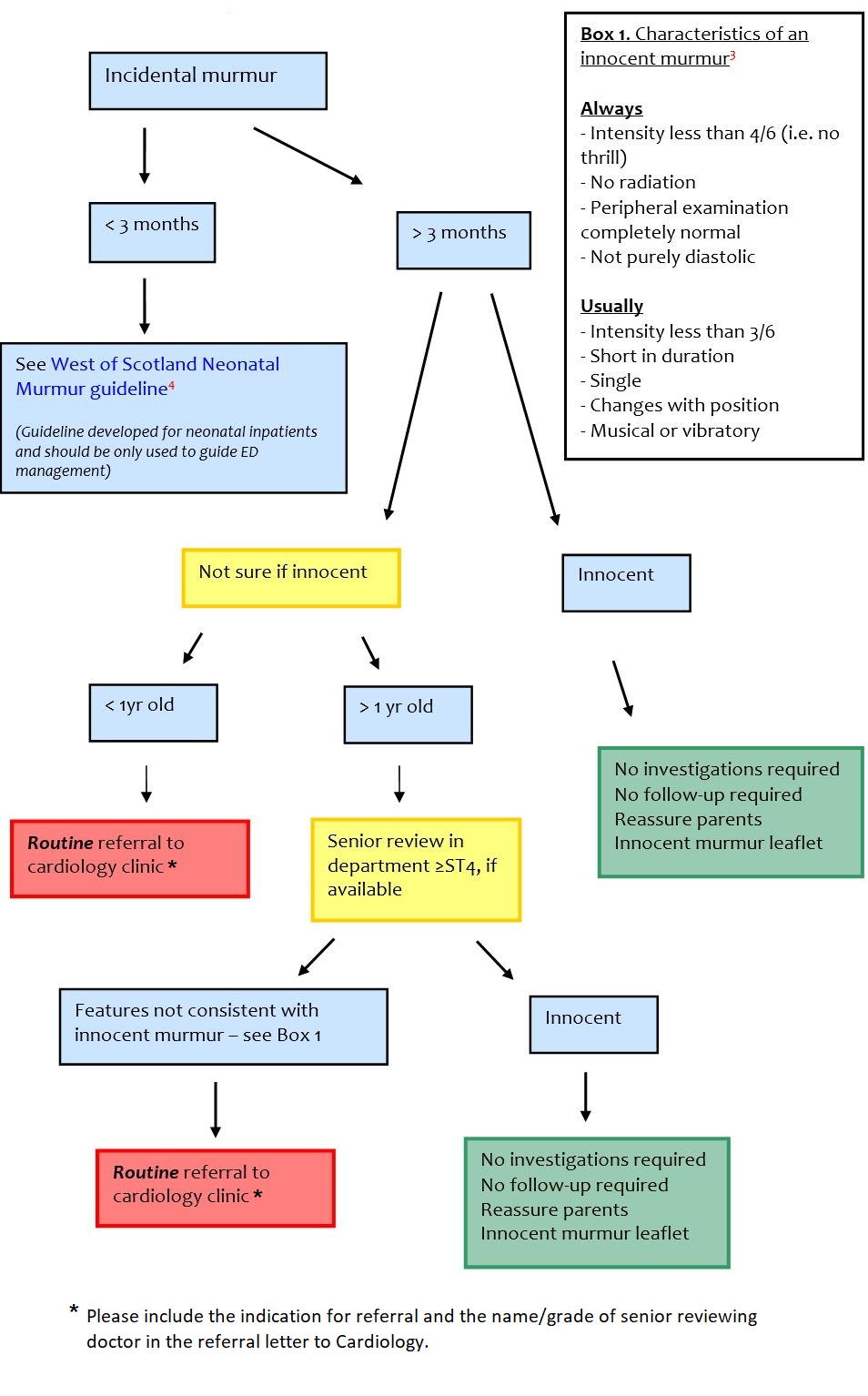Incidental murmur
exp date isn't null, but text field is
Heart murmurs in children are very common. In asymptomatic, healthy children, these murmurs are often ‘innocent’ or ‘functional’ and result from the normal patterns of blood flow through the heart and vessels.1
Anxiety often exists around the discovery of a murmur in a child and clinicians worry that they may be missing significant cardiac lesions. However, it is unlikely that a major or complex and life-threatening cardiac lesion will present with an asymptomatic murmur after 6 weeks of age.5,6
Differentiation of innocent murmurs from those due to structural heart disease is largely clinical. The use of ECG and CXR do not significantly contribute to the diagnosis.
Innocent murmurs do not require review from a cardiology consultant; and most do not require referral to cardiology clinic*. This guideline is an aid for medical staff working in A&E who hear a murmur incidentally when examining a child. If the murmur is characteristically innocent (see box 1), referral or further investigation is not required.2
As the murmur is an incidental finding, it is assumed the child is thriving, is cardiovascularly stable, has no signs of heart failure (tachypnoea, increased respiratory effort, hepatomegaly, shock), has normal pulses (including femoral pulses) and is acyanotic. If any of the above do not apply, this guideline is not applicable.
*NOTE: If a referral is required, please include the indication for referral and the name/grade of senior reviewing doctor in the referral letter to Cardiology.

- Biancaniello T. Innocent murmurs. Circulation. 2005;111(3):e20–e22
- MacLeod C. Evaluating cardiac murmurs; are diagnostic tests helpful? Irish medical journal 2001 vol:94 iss:5 pg:154 -5
- Bronzetti G, Corzani A. The Seven "S" Murmurs: an alliteration about innocent murmurs in cardiac auscultation. Clin Pediatr (Phila) 2010;49(7):713
- West of Scotland MCN for Neonatology. Heart murmers in the neonate. 2014.
- Johnson, R. Holzer. Evaluation of asymptomatic heart murmur. Current Paediatrics (2005) 15, 532–538
- Wren C, Richmond S, Donaldson L. Presentation of congenital heart disease in infancy: implications for routine examination. Arch Dis Child Fetal Neonatal Ed 1999;80(1):F49–5
Last reviewed: 01 June 2018
Next review: 31 October 2025
Author(s): S Hendry, B Smith, T Kendrew-Jones
Approved By: Paediatric Clinical Effectiveness & Risk Committee

